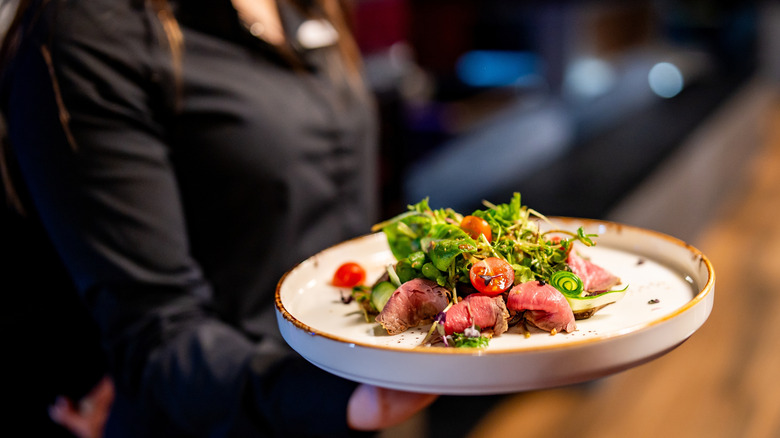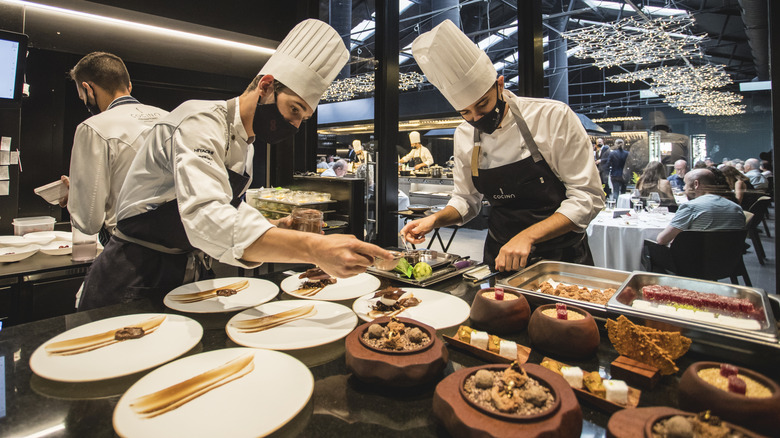How Does A Restaurant Tasting Menu Work?
If you regularly visit fine dining restaurants, especially Michelin-starred establishments, chances are you'll encounter a tasting menu, sometimes called a degustation menu. Indeed, some high-end restaurants only offer tasting menus, with no option to order à la carte from a list of appetizers and entrees.
Tasting menus offer a number of courses for a fixed price, ranging from three or four courses, to more than 20 courses. (You could argue that a tasting menu with three courses is actually a prix fixe menu, which has some similarities, but isn't the same thing.) Eating 10 or 20 courses may seem absurd, but restaurants typically adjust portion sizes so that diners won't get full halfway through. This means each course may be just a couple of bites. Bear in mind that the entire menu can be an experience lasting several hours.
When ordering a tasting menu, don't expect to customize it or make changes. The goal is to showcase a chef's talents or top-notch dishes, so chefs may not take kindly to modifications based on taste (Ideally, they'll accommodate allergies, but notify them in advance). The tasting menu structure also helps chefs put all their focus on crafting a limited number of exceptional dishes. Instead of an à la carte menu, where the kitchen has to master numerous dishes (and some may rarely get ordered), a tasting menu lets the restaurant focus on a smaller number of items. Plus, there's less food waste: Chefs don't need to prepare components of dishes that might not get ordered.
How different tasting menus work
When ordering a tasting menu, it's possible that you may have no choices at all in terms of the food; If a restaurant only offers, say, a seven-course tasting menu, you likely won't even have to choose a thing. However, some restaurants may offer a choice of two tasting menus (for example, five or eight courses), or an alternate tasting menu for vegetarians. If a restaurant offers both à la carte and a tasting menu, you may not be able to mix the two. Everybody at one table may have to choose one or the other (instead of two people having tasting menus and one eating à la carte).
Some tasting menus may be a little more flexible, where most of the menu is fixed, but you have a choice between, say, a meat or a fish dish. Or, you may have the option to add a premium ingredient like truffles for an added cost. The exact structure varies between restaurants but may follow the classic appetizer-entree-dessert order — with multiple courses presented in each section, followed by small palate cleansers (like a sorbet) to tie everything together.
Tasting menus often keep drinks separate. Wine pairings are common (You'll pay a fixed price for a set number of wine glasses that are then paired with the dishes), but there's often more flexibility here and you may be able to order individual bottles from a larger list. Some restaurants may offer beer pairings for your meal or creative non-alcoholic drink pairings, too.

